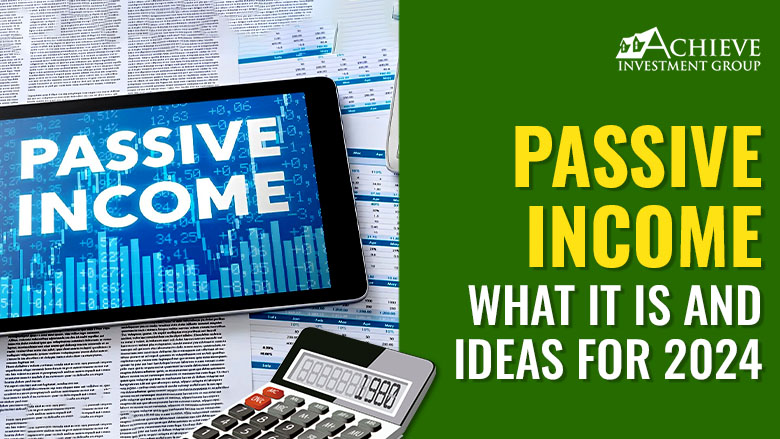Introduction In today’s ever-evolving real estate market, savvy investors constantly seek opportunities that promise solid returns and long-term growth potential. One such avenue that has gained significant traction in recent years is investing in apartment complexes. This article delves into why apartment complexes are emerging as the future of real estate investment. The Changing Landscape of Real Estate Investment Real estate investment has witnessed a seismic shift in recent times. Traditional single-family homes and commercial properties are no longer the only go-to options for investors. Apartment complexes have become increasingly popular for several compelling reasons. The Growing Demand for Rental Properties With changing demographics and lifestyle preferences, more people rent rather than own homes. Millennials and young professionals, in particular, are embracing the flexibility and convenience that renting offers—this growing demand for rental properties positions apartment complexes as a lucrative investment choice. Diversification of Risk Investors often seek diversification to mitigate risks associated with their portfolios. Investing in apartment complexes provides an opportunity to spread risk across multiple units, reducing the impact of vacancies or market fluctuations on overall returns. This diversification is especially valuable in uncertain economic times. Steady Cash Flow Apartment complexes generate a consistent stream of rental income. Unlike other real estate investments that may experience seasonal fluctuations, rental income from apartment complexes tends to be stable and predictable. This reliable cash flow attracts investors looking for a steady income stream. Economies of Scale Managing multiple rental units within a single complex allows for economies of scale. Maintenance, repairs, and management costs are often lower on a per-unit basis, enhancing the overall profitability of the investment. This cost-efficiency is a significant advantage of apartment complex ownership. Potential for Appreciation In addition to rental income, apartment complexes offer the potential for property appreciation over time. As the demand for rental properties continues to rise, the value of well-maintained apartment complexes can be appreciated significantly, providing investors with substantial long-term gains. Tax Benefits Investors in apartment complexes can benefit from various tax incentives, including deductions on mortgage interest, property depreciation, and maintenance expenses. These tax advantages can optimize the overall return on investment. Critical Considerations for Apartment Complex Investment While apartment complexes offer promising opportunities, it’s crucial to consider some critical factors before diving into this venture. Location Matters The location of an apartment complex plays a pivotal role in its success. Investing in a complex in a desirable neighborhood with solid rental demand can significantly impact your returns. Research potential locations carefully and analyze market trends. Property Management Effective property management is essential for maximizing returns and tenant satisfaction. Whether you manage the complex yourself or hire a professional property management company, a well-maintained property is crucial for success. Financial Planning A comprehensive financial plan is vital for estimating potential returns and managing expenses. When creating your investment strategy, factor in mortgage payments, property taxes, insurance, and ongoing maintenance costs. Market Research Stay updated with market trends and rental rates in your chosen location. Conduct thorough market research to ensure that your investment aligns with the current demand and pricing in the area. Tenant Screening Selecting reliable tenants is critical for maintaining a stable income stream and minimizing vacancies. Implement a rigorous tenant screening process to identify responsible renters likely to stay long-term. Risk Management Although apartment complexes offer diversification, there are still risks involved. Be prepared for occasional vacancies and market fluctuations by having contingency plans. FAQs Q: What is the minimum investment required for an apartment complex? Investment requirements vary depending on the complex’s location, size, and condition. Conducting a thorough financial analysis and securing financing if needed is essential. Q: Are there tax advantages to investing in apartment complexes? Yes, investors can benefit from tax deductions on mortgage interest, property depreciation, and maintenance expenses. Consult with a tax professional to maximize these advantages. Q: How can I ensure a high occupancy rate in my apartment complex? Maintaining a well-kept property, conducting effective marketing, and implementing a thorough tenant screening process are crucial to achieving a high occupancy rate. Q: What are some common challenges faced by apartment complex investors? Common challenges include managing tenant turnover, handling maintenance and repairs, and staying updated with changing market conditions. Q: Can I invest in apartment complexes with a limited budget? While larger complexes may require substantial investments, there are opportunities to invest in smaller complexes or partner with other investors to pool resources. Q: How can I optimize the ROI on my apartment complex investment? Focus on effective property management, keeping expenses in check, and staying attuned to market trends to maximize your return on investment. Conclusion Investing in apartment complexes offers a promising avenue for real estate investors seeking stable returns and long-term growth potential. With the rising demand for rental properties, the potential for appreciation, and various tax advantages, apartment complexes are indeed the future of real estate investment. However, conducting thorough research, considering key factors, and implementing sound management practices are essential to ensure a successful investment journey.









